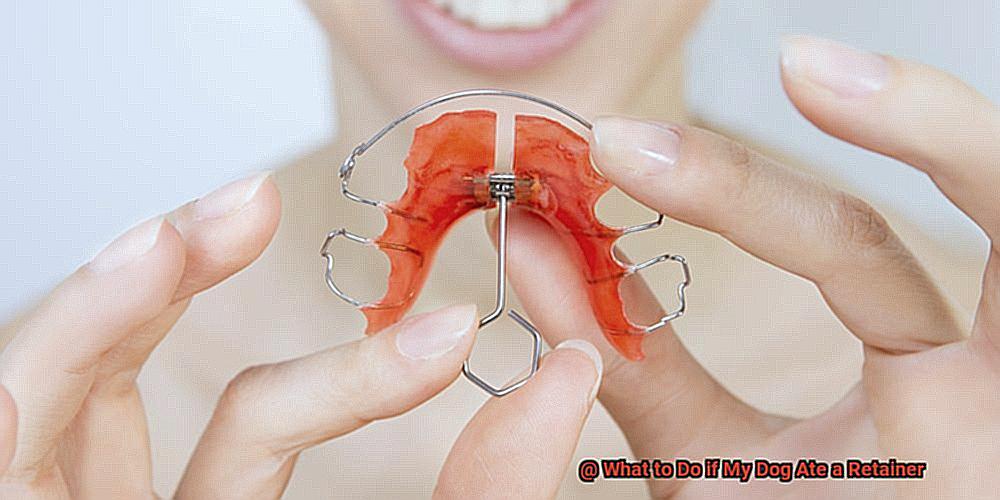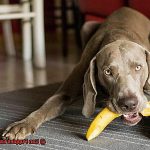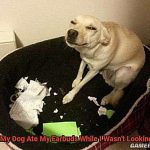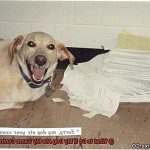What to Do if My Dog Ate a Retainer?
You open the door and there it is: your beloved dog with a retainer in its mouth.
But retainers aren’t meant to be eaten. So, what do you do if your dog ate a retainer? Don’t panic. We’ll show you how to keep your pup safe and healthy.
In this blog post, we’ll discuss the potential health risks of dogs eating retainers as well as the precautions you should take if your pup has eaten one.
Plus, we’ll have advice on how to avoid future incidents like this from happening.
By the end, you’ll have all the info you need to protect your pup.
Let’s dive in.
What is a Retainer?
Contents
- 1 What is a Retainer?
- 2 Common Reasons Why Dogs Eat Retainers
- 3 Signs and Symptoms of Swallowing a Retainer
- 4 What to Do if You Suspect Your Dog Has Eaten a Retainer
- 5 How to Prevent Your Dog from Eating a Retainer
- 6 The Dangers of Eating a Retainer for Your Dog
- 7 Treatments for Dogs Who Have Eaten a Retainer
- 8 When to Call the Vet After Your Dog Eats a Retainer
- 9 Conclusion
If you’ve gone through the pain of getting braces, a retainer is your best friend. A retainer is a clear plastic device that fits snugly over your teeth and helps keep them in their new, straight shape.
It prevents them from shifting back into their original position and can even be used to correct minor misalignments, such as crowding or spacing between teeth.
The great news is that retainers don’t require much effort to use.
After getting your braces off, you’ll have to wear it for several months, then only at night.
This means you can still show off your beautiful smile all day long without having to worry about wearing something uncomfortable.
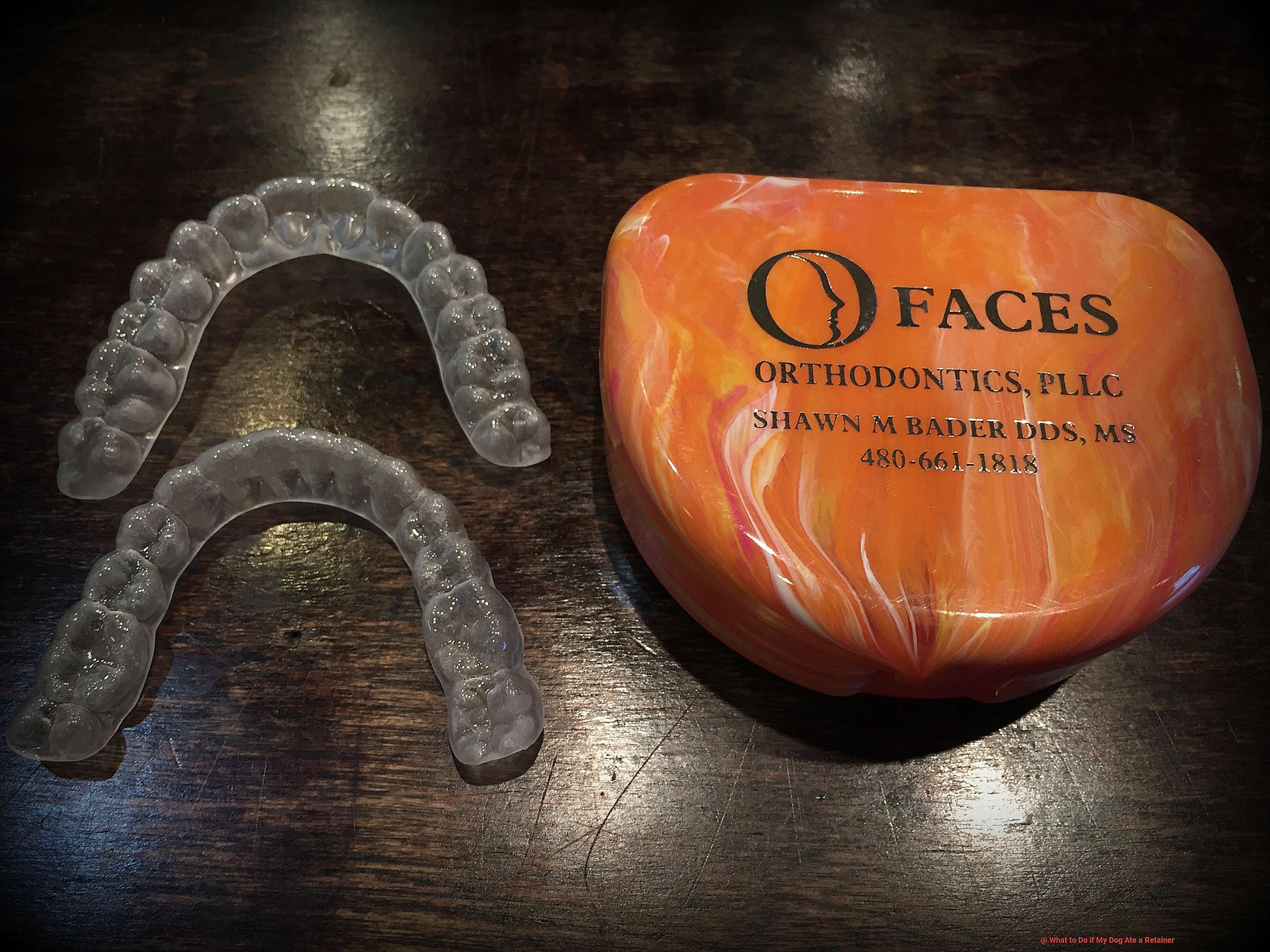
Retainers are an essential investment for long-term braces results.
Think of them as a way to ensure your stunning smile stays perfect well into adulthood.
Common Reasons Why Dogs Eat Retainers
Do you ever come home to find your retainer missing? It’s likely that your furry friend is the one responsible.
Dogs are naturally curious creatures, and they have a tendency to explore and chew on items that don’t belong to them.
Retainers can be particularly appealing to dogs due to their tasty smell or flavor.
Boredom is also a common explanation for why dogs eat retainers.
If they’re kept in their crate for too long without stimulation, they may become restless and start nibbling on whatever they can get their hands on – even your retainer.
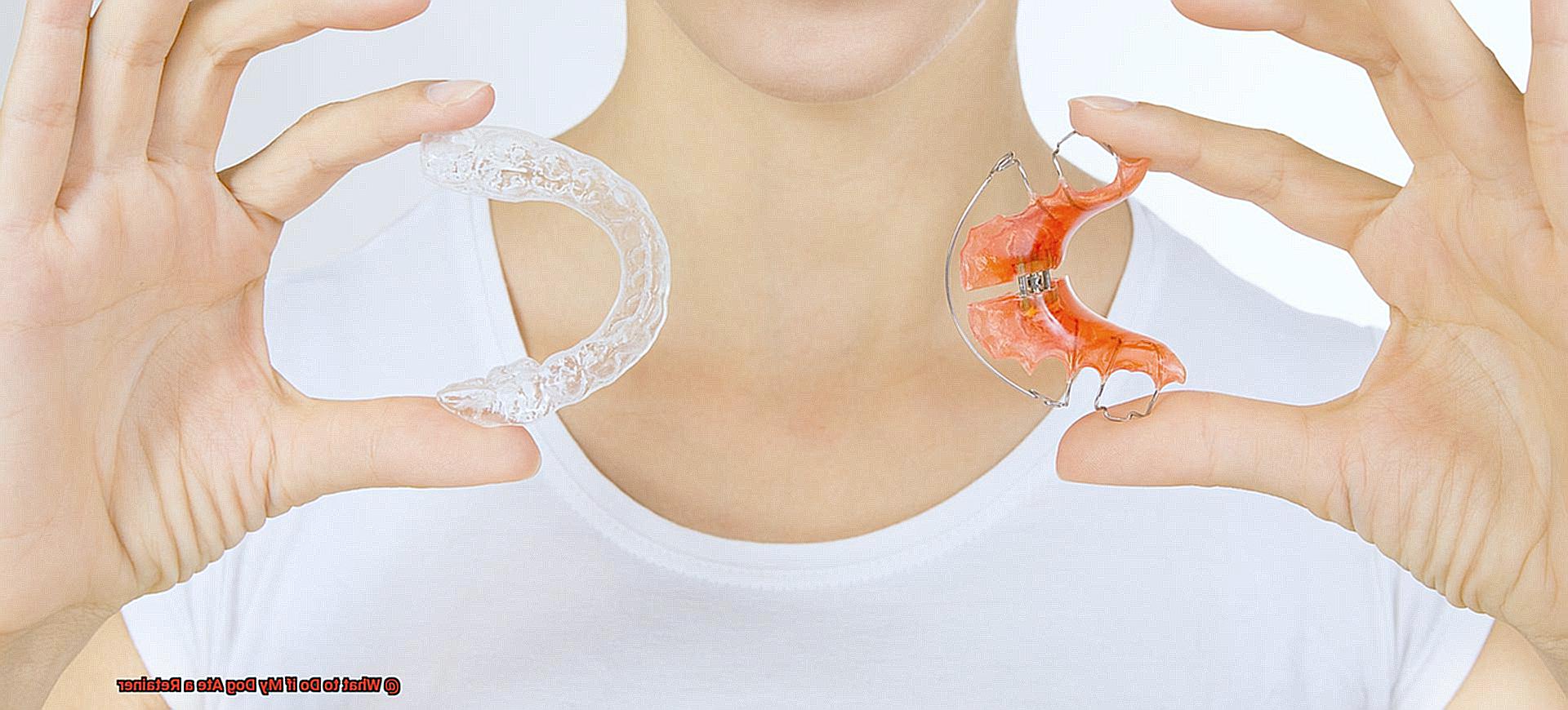
It’s also possible that your pup mistook your retainer for food.
If it’s been left on the floor, they may think it’s a delectable snack and try to eat it.
No matter what the reason your dog ate your retainer, it’s important to take steps to prevent it from happening again.
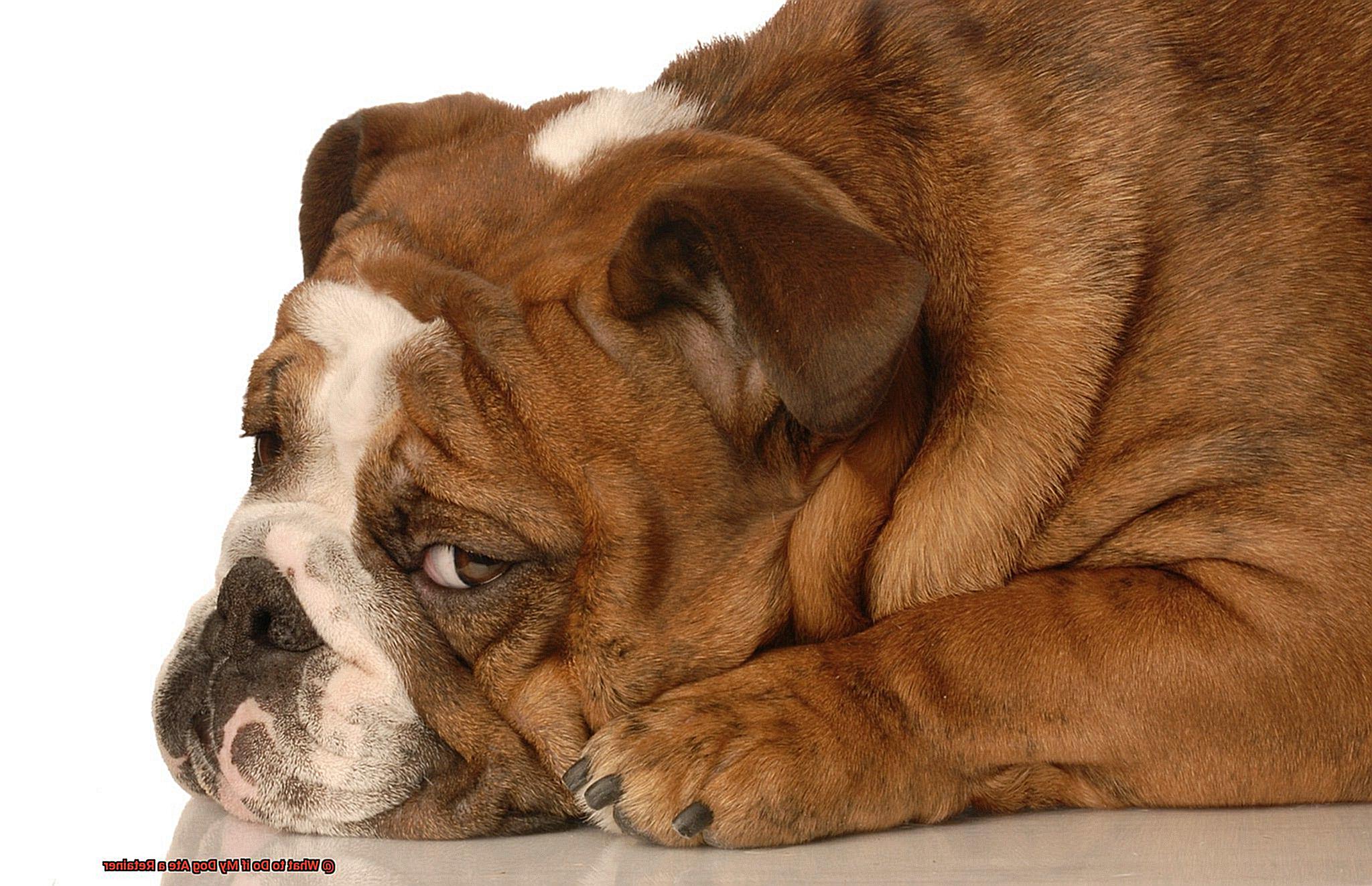
Make sure you keep all of your retainers out of reach from curious canines so you don’t have to worry about losing anything else.
Signs and Symptoms of Swallowing a Retainer
It is important to be aware of the signs and symptoms of a dog swallowing a retainer.
In the hours after ingesting the retainer, your pup may start exhibiting tell-tale signs such as vomiting, gagging, drooling, abdominal pain, and/or lethargy.
If any of these symptoms persist, take them to the hospital right away.
In certain cases, X-rays may be necessary to determine if a retainer is present in the stomach.
It is important to note that allowing a retainer to remain in your pup’s stomach can be extremely risky and potentially life-threatening.
If not addressed promptly, it can cause an obstruction in the intestines that can be fatal.
What to Do if You Suspect Your Dog Has Eaten a Retainer
If your dog has eaten a retainer, this blog post is for you. We’ll explore what to do if your canine companion swallowed a retainer and how to keep it from happening again.
First, contact your veterinarian immediately. They will be able to advise you on how best to treat the situation and whether or not any medical intervention is necessary. Depending on the size and type of retainer, it may pass through the digestive system without causing any harm or it may need to be removed surgically by a specialist.
Second, monitor your dog’s behaviour closely for any signs of distress or discomfort such as excessive drooling, vomiting, or difficulty breathing. These could indicate an obstruction in the digestive tract as a result of the retainer, so take them to the hospital right away if they have any of these symptoms.
Third, make sure all retainers are out of reach of your pet and keep an eye on them while playing with toys that may contain small parts. Investing in some chew-proof toys can also help prevent this from happening again in the future.
Fourth, if medication is prescribed by your veterinarian, follow all instructions closely and track your pet’s recovery progress. This will ensure that your furry friend stays safe and healthy during their recovery time.
Finally, remember that prevention is key. Taking steps now can help prevent this from happening again in the future.
Keep retainers out of reach and invest in some chew-proof toys for your pup so that they can enjoy eating something they shouldn’t.
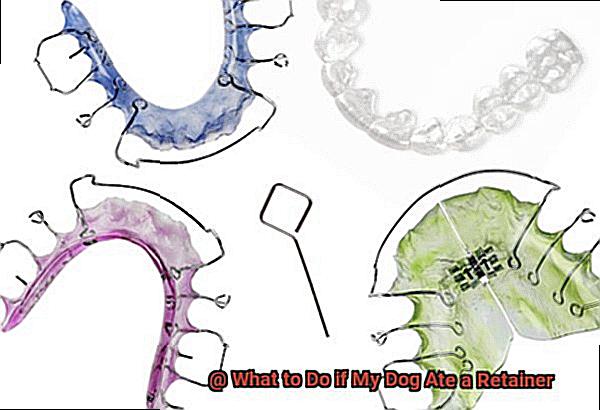
How to Prevent Your Dog from Eating a Retainer
It’s no fun coming home to find your retainer chewed up by your pup.
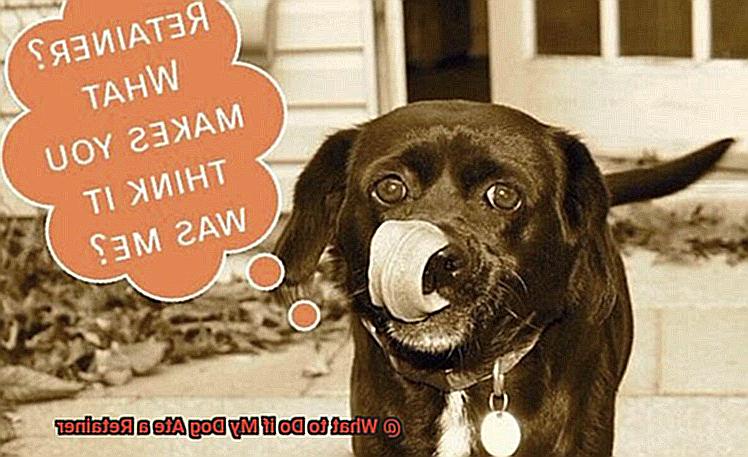
To prevent this from happening, it’s important to keep your dog away from the retainer.
Here are five ways to protect your retainer and keep it safe from sharp teeth.
First and foremost, store the retainer out of reach. Put it in a locked drawer or cabinet where your pup won’t be able to gain access.
Second, monitor your dog’s behavior when they’re wearing the retainer. Be aware of any signs that they may be looking for something to chew on and take steps accordingly. If you notice them trying to chew on things, third, distract them with toys and treats. This will help keep them occupied and away from the retainer.
Fourth, train your dog not to chew on things. This will help them avoid getting access to the retainer in the future and also teach them good habits when it comes to chewing items around the house.
Finally, invest in a pet-proof container if possible, as this will help keep retainers out of reach from curious dogs who may want to take a bite.
You can be sure that your pup won’t be able to get their paws on your expensive retainer by following these guidelines.
The Dangers of Eating a Retainer for Your Dog
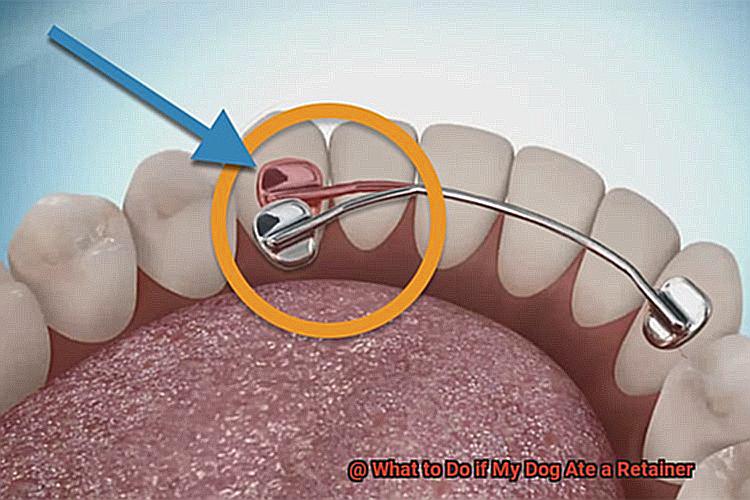
Eating a retainer can have serious consequences for your furry friend.
Retainers are made of plastic and metal, both of which can cause major health problems if ingested.
Blockages in the dog’s digestive tract can occur, leading to vomiting, diarrhea, abdominal pain, and even death.
Choking is another risk as the material can become stuck in the dog’s throat.
Iron poisoning from ingesting the retainer may also lead to anemia.
Small parts present on the material may cause intestinal lacerations or perforations if ingested.
Lastly, infection due to bacteria on the tissue is a possibility.
If your pup has gotten their paws on their retainer, it’s best to call your veterinarian right away for advice and assistance.
Treatments for Dogs Who Have Eaten a Retainer
When a dog has eaten a retainer, it can be a worrying situation for pet owners.
But with the right treatment, your pup can make a full recovery.
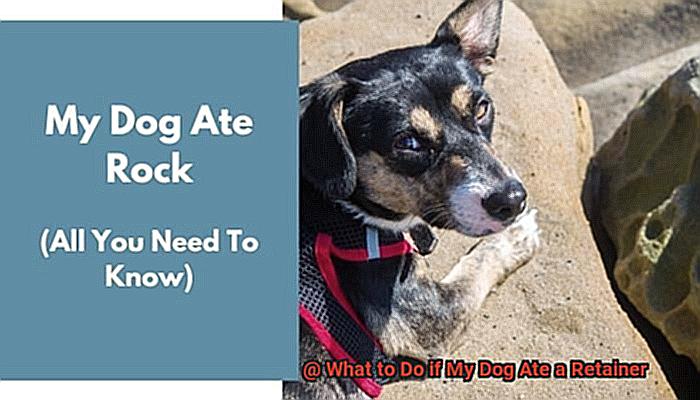
The first step is to take your dog to the vet, who will determine if the retainer is still in their stomach or has already passed through.
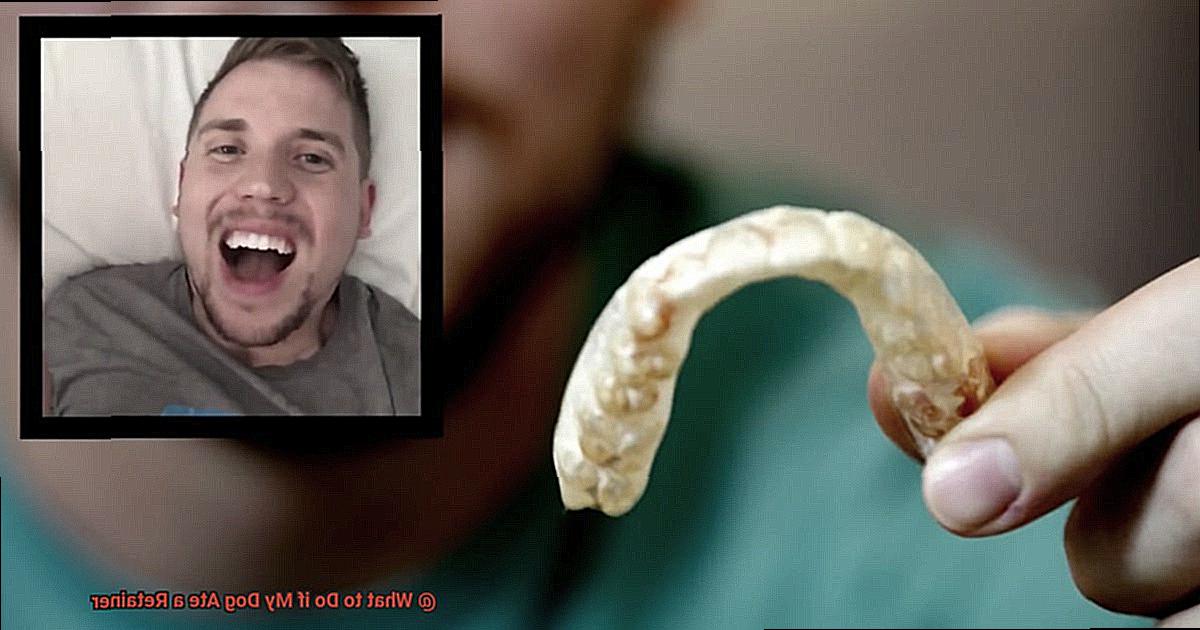
If it’s still inside, surgery may be needed to remove it.
If it’s passed through, then monitoring for any potential complications such as gastrointestinal distress or infection may be necessary.
It’s important to make sure that your dog is getting plenty of fluids and rest during their recovery.
Your vet may also prescribe medications such as antiemetics or antibiotics if needed.
Lastly, keep an eye on your pup’s behavior and look out for any signs of distress or discomfort – early detection could help prevent more serious issues from developing later on.
When to Call the Vet After Your Dog Eats a Retainer
As a pet parent, the last thing you want is for your beloved pup to swallow a retainer.
Knowing when to call the vet and what signs to look out for can help keep your furry friend safe and healthy.
If your dog has ingested a retainer, be sure to watch for any signs of distress.
Vomiting, diarrhea, loss of appetite, lethargy, and difficulty breathing are all indicators that it’s time to seek medical attention.
If they’re having trouble passing the retainer through their digestive system, they may need assistance from a professional.
Your veterinarian is an invaluable resource in this situation.
They can provide advice on how to proceed if you’re unsure what to do, and may suggest taking X-rays or other tests to determine if the retainer is causing any blockages or other complications.
If you think your pup has eaten a retainer, it’s important to act quickly.
Monitor them closely for any of the above symptoms and call the vet as soon as possible if any arise.
The sooner you notice any problems, the better chance you have of preventing long-term damage or serious health risks for your pooch.
Conclusion
If you ever find your pup with a guilty look and something suspiciously missing from the house, it’s important to know what steps to take.
Eating a retainer can have serious consequences for your furry friend, so call your veterinarian right away for advice and assistance.
Monitor them closely for signs of distress such as drooling, vomiting, or difficulty breathing.
If any of these persist, take them to the hospital immediately.
With love and care, they will make a full recovery if the right treatment is used.
Prevention is key. Start small by removing retainers from reach and investing in chew-proof toys.
This can help prevent this from happening again.
Remember that if caught early enough, you can save your puppy from potential health issues associated with eating a retainer.
